
1. Description of the example
A supersonic hybrid layer is a flow formed by the meeting of two incoming streams (at least one of which is supersonic flow) behind an intermediate separator, which is a typical compressible shear flow.
The spatiotemporal evolution characteristics of the flow field of the supersonic mixed layer are complex and widely used in engineering practice, so this paper takes the supersonic mixed layer as the research object, and uses Dimaxer2023R2 to conduct numerical simulation research.
2. Calculation status
2.1 Models
Using the reference model, the span is 20mm, and the rest of the detailed dimensions and model status are shown as follows:

2.2 Grids
The mesh uses a full hexahedral mesh (Hex8) and is encrypted in the mixed layer, the first layer of the partition is about 0.17mm in height, and the mixed layer is split into four using the Element Divide tool in Dimaxer2023R2, as shown in the figure below:
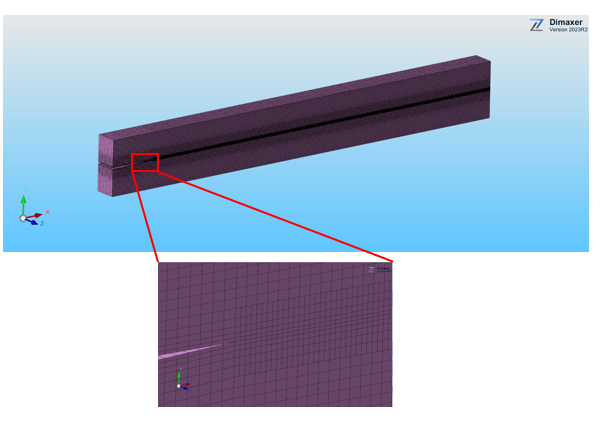
The final number and quality of the calculated grids are shown in the following figure:
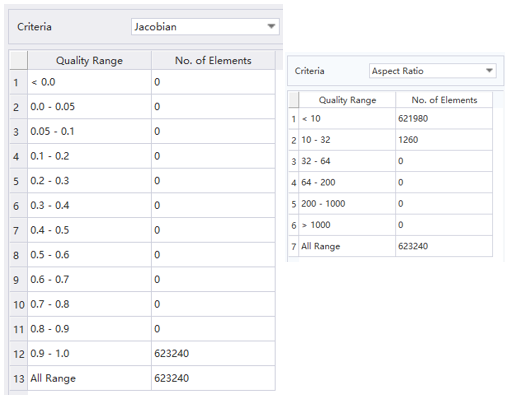
2.3 Boundary Conditions
Refer to the following figure for the boundary position, and refer to the following table for specific parameters:

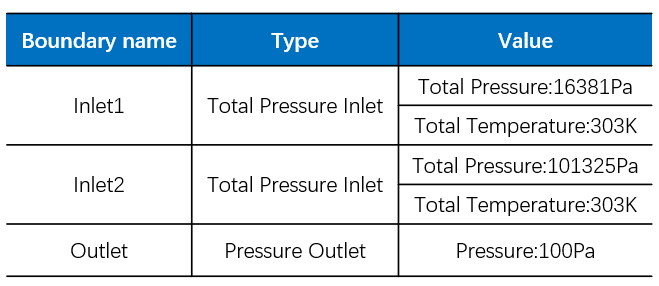
2.4 Initial Setup
The upper and lower layers have different flow states, so a separate initial field is assigned to each of the calculations, and the detailed settings are shown in the following figure:
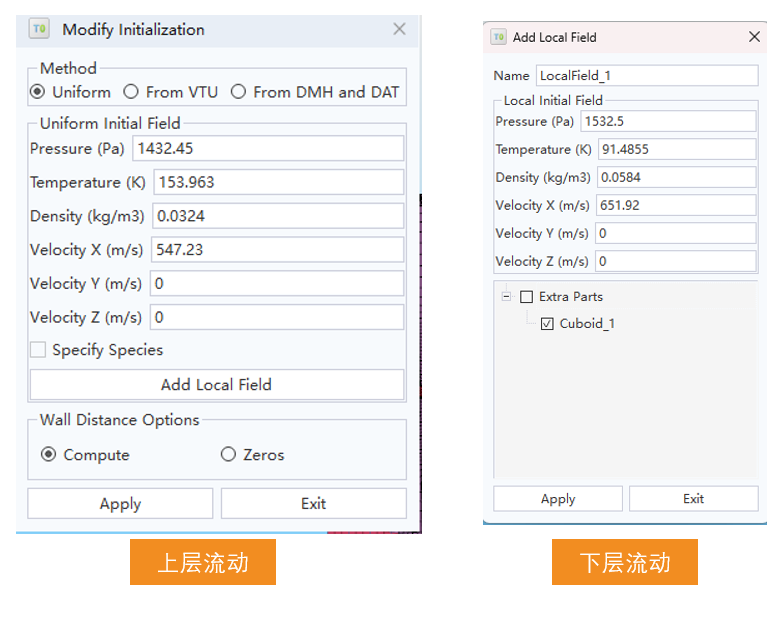
After the initial field is set up, view the results of the initial field as follows:

3. Calculation results
3.1 Basic flow field
The evolution process from laminar flow to turbulent flow in the mixed layer is obtained by simulation, and a clear K-H vortex structure is obtained, as shown in the figure below. In addition, any vortex structure was selected to obtain its motion distance along the flow direction in 5 ╬╝s.
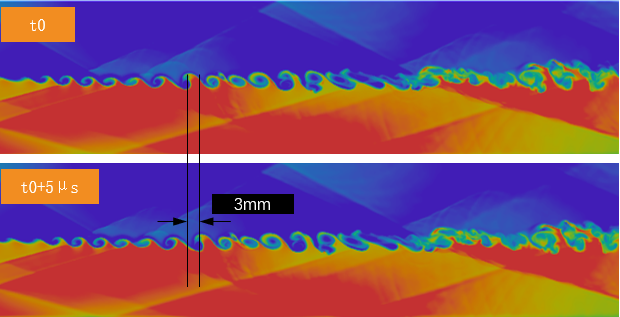
Thus, the vortex velocity of the mixed layer can be obtained and compared with the experimental and theoretical values, as shown in the following table:

The calculated results are close to the theoretical calculated values.
3.2 Small shock wave structure
This time, the convective Mach number Mc=0.24 is calculated, and the small shock wave structure (shocklet) is obtained, as shown in the figure below:
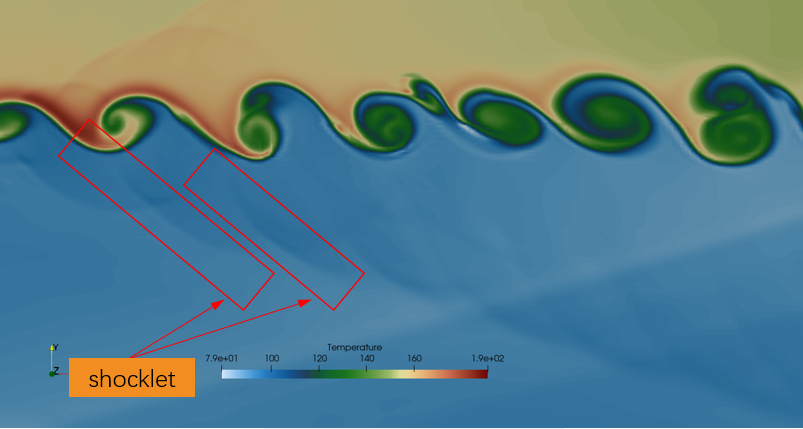
3.3 Three-dimensional vortex structure
The Q criterion is used to obtain the evolution process of the vortex structure of the mixed layer.
The transient change process of the three-dimensional vortex structure is as follows:
From this, we can see the process of the vortex structure changing from small to large and then to crushing.
In addition, several "hairpin vortices" can be seen at the transition.

4. Computing efficiency
In this calculation, about 62W grid, fourth-order precision solving, a total of 3968W solution points, using two 4090 GPU cards, a total of about 29.7 flow periods (calculated by the characteristic length of the lower layer flow and incoming flow velocity), each flow period is about 0.58 GPU hours. It takes about 8.66 hours for the calculation to complete.
5. Summary
1. The basic flow field information of the mixed layer is preliminarily obtained by using Dimaxer 2023R2, which is generally close to the physical laws of the experimental results and related references.
2. The computational efficiency of Dimaxer 2023R2 is excellent, and the current computational effect requires low hardware cost and time cost.
Rankyee ń▓żICPÕżć2023060583ÕÅĘ